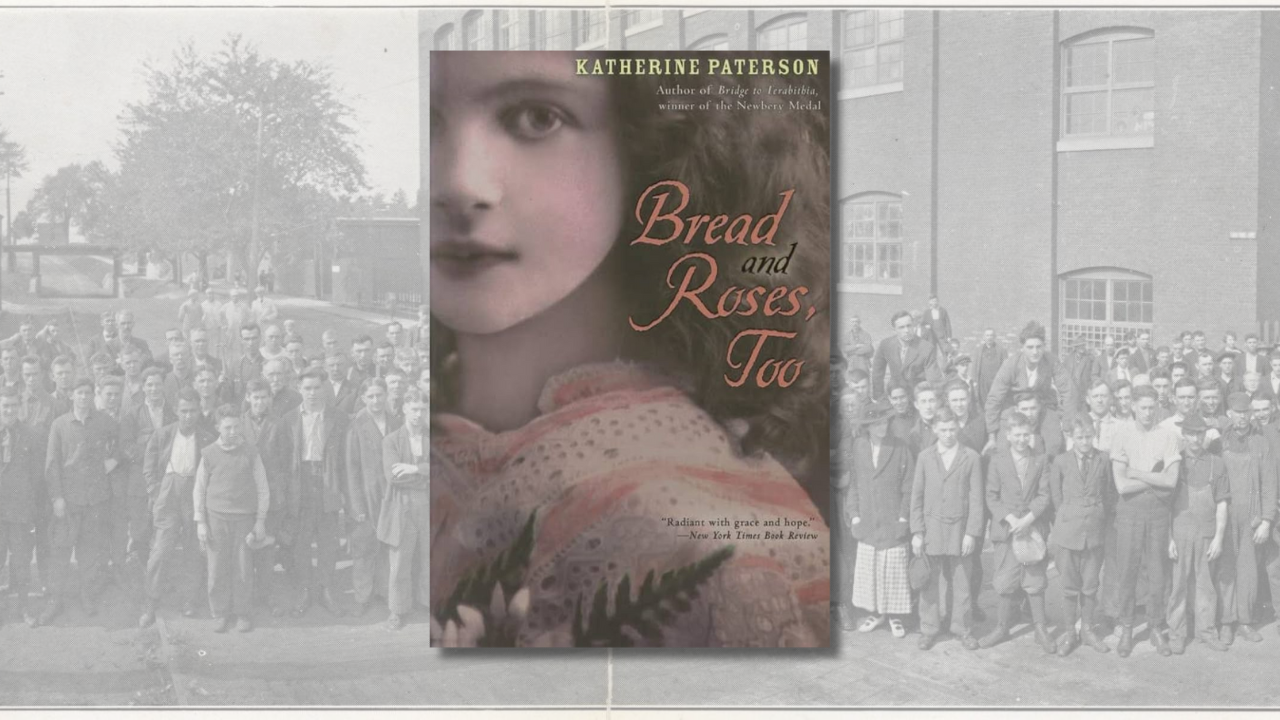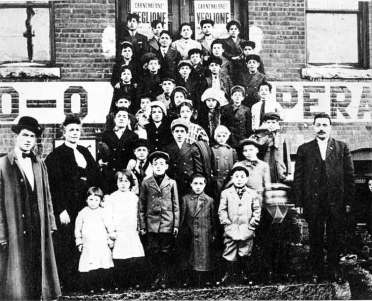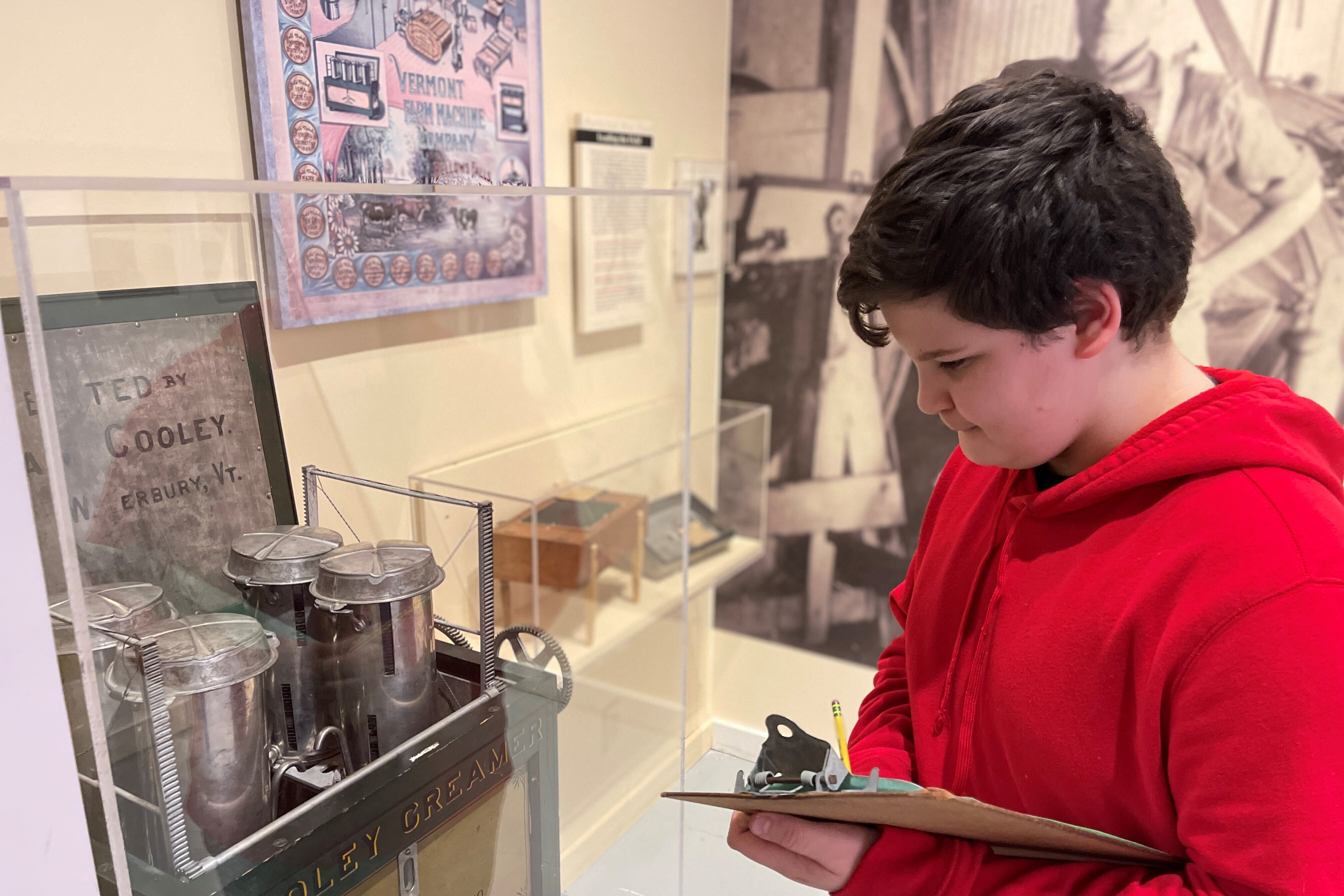Exploring Vermont's labor history through the historical fiction of Katherine Paterson

If you're seeking to travel inside the history of labor in Vermont, you're not going to find a better vehicle than Katherine Paterson's novel Bread and Roses, Too. Vermont Humanities 2018 pick for "Vermont Reads," this work of historical fiction tells the story of the 1912 “Bread and Roses” textile mills strike in Lawrence, Massachusetts. The strike and organizing of workers, particularly immigrant women, is brought to life through Paterson's characters Rosa and Jake, two children from Lawrence sent to live temporarily with foster families in Barre, Vermont, out of harm's way. These characters open a window into the history of the strikers, labor in Barre at that time, and the unexpected connection between these two communities.
Barre, Vermont, home to VHS's Vermont History Center, is a place deeply connected to the labor movement. It is home to the Socialist Labor Party Hall, also known as the "Old Labor Hall," built in 1900 by Italian immigrants and a center for agitation and radical politics. In the early 1900's, Barre was considered the best-organized town. As you can read more about in our Freedom and Unity Exhibit, ninety percent of the granite industry workforce of Barre belonged to one of fifteen unions. With this rich labor history, Barre emerges as a natural source of inspiration for Katherine Paterson's novel. The initial spark for the book came when she viewed this photograph of the strikers children taken on the steps of the Old Socialist Labor Hall. The caption read: “Children of Lawrence, Massachusetts, Bread and Roses Strike Come to Barre.” This novel is the result of her exploration into what children from that city were doing in her Vermont town.

Historical fiction is a powerful tool for getting inside history. In this 2004 Keynote Address at the Vermont Historical Society's annual meeting titled "Why Historical Fiction?" Katherine Paterson shares about the many reasons why she writes historical fiction. The process of discovery embedded in the genre serves as a common theme, from the perspectives gained from meeting and creating characters to the uncovering of the history that shapes them. Paterson notes that "history gives us a pair of powerful eyeglasses with which to examine our own times" and that the "spectacles of historical fiction" help us make sense of our own time and place.
Twenty year's after this address, we revisited this question of "why historical fiction" as a vehicle for exploring labor history with Bread and Roses, Too in mind. Katherine Paterson shared the following thoughts with us:
I think it’s very important (to engage with labor history). It’s important for people who are part of the labor force to see themselves with dignity and respect.
Because I am a fiction writer and not a nonfiction writer, I love to get inside of people. You can’t really get inside of historical figures, so I would people the history with fictional characters that I could get inside of; I wanted to put them right in history. I think it’s against the rules of historical fiction to switch dates around and make things so that it helps your story. The history is the framework within which you have to work. How the fictional writer responds to the actual events is your job, not inventing the history or bending the history.
With the freedom that historical fiction lends, Paterson allows us to experience Jake and Rosa's cold, hunger, longing, excitement, struggles, and triumphs while standing in their shoes. And yet as readers, we're simultaneously prompted to explore the primary sources that underpin their story and the historical framework in which they exist.
That's where the Vermont Historical Society is here to help. To learn more about the Lawrence Strike of 1912 and Barre's support of the strike, visit the Old Labor Hall's website and read this article on our Vermont History Explorer website that documents the story of those children who came to Barre. Vermont History Explorer also features a number of articles that intersect with themes related to this novel, including Barre Granite Strikes and Child Labor in Vermont. Explore further by visiting our Library Catalog and searching terms related to these topis. And read these letters from Lowell, written by a factory girl and sent back to her home in Vermont. Like the picture of the children on the steps of the Old Socialist Labor Hall above, it was primary source letters from factory girls that served as the spark for another of Paterson's novels: Lyddie. Again, we see how historical fiction is both fueled by history and fuels us to immerse ourselves deeper into the history behind the stories we share.
